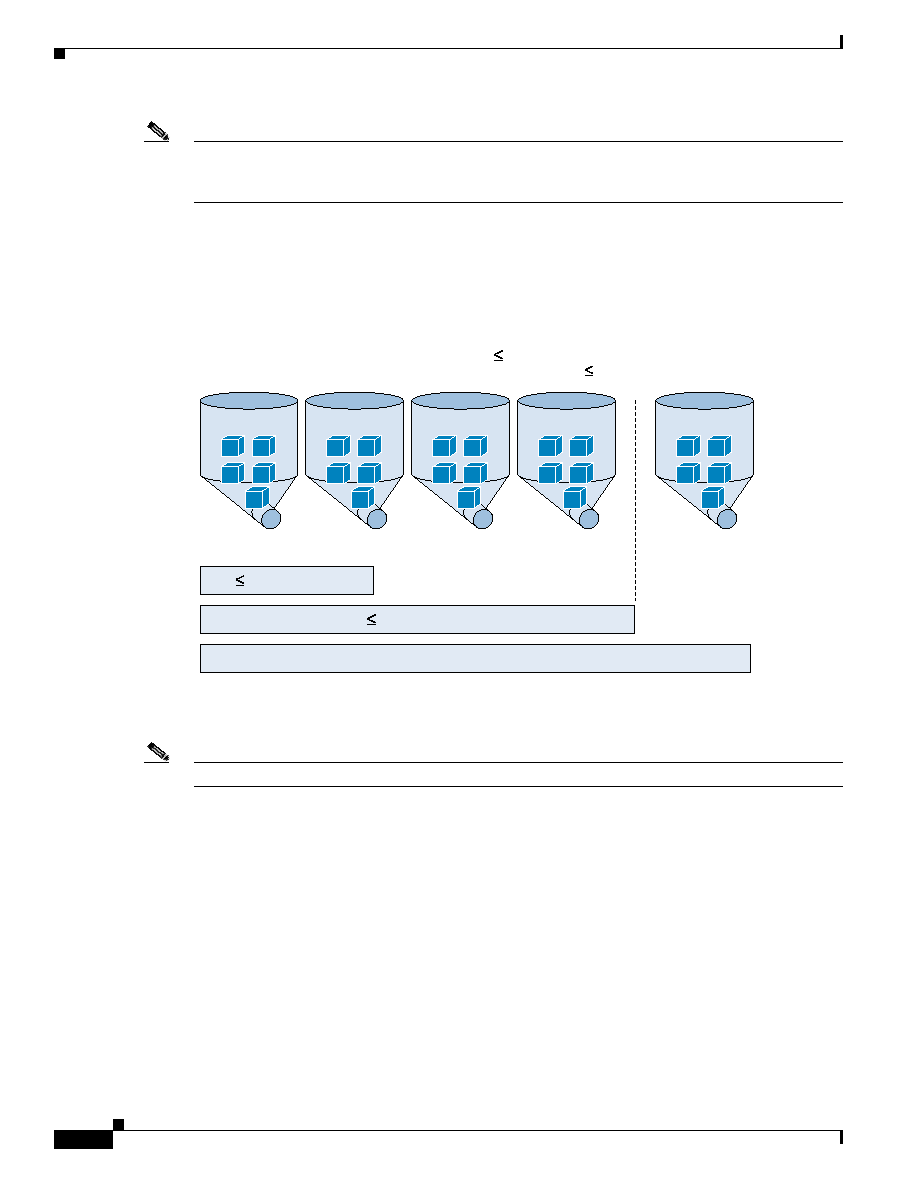
1-20
Cisco AVVID Network Infrastructure Enterprise Quality of Service Design
956467
Chapter 1 Overview
What is the Quality of Service Toolset?
Note
The 33% limit for all LLQs is a design recommendation. There may be cases where specific business
needs cannot be met while holding to this recommendation. In such cases, the enterprise must provision
queueing according to their specific requirements and constraints.
illustrates the recommendations that LLQ is no more than 33% of the link and all bandwidth
guarantees are no more than 75% of the link capacity.
Figure 1-11 LLQ and CBWFQ
The functionality of LLQ has been extended in IOS 12.2 to allow the specification of a burst size for the
LLQ. This burst parameter is highly useful in provisioning QoS for video conferencing.
Note
Distributed LLQ (dLLQ) is the distributed counterpart of LLQ.
Weighted-Random Early Detect
As mentioned before, congestion avoidance mechanisms, like Weighted-Random Early Detect (WRED),
are complementary to and dependent on queueing algorithms.
The default router behavior allows output buffers to fill during periods of congestion and then drops
everything thereafter (tail-drop). Due to the nature of the sliding-windows mechanism of TCP, a
potentially large number of packets from numerous connections are discarded because of lack of buffer
capacity during tail-drop. This behavior can result in waves of congestion followed by periods during
which the transmission link is not fully used.
illustrates such congestion waves created by
tail-drop.
Video
Voice
Control
Data
Routing
LLQ 33%
LLQ/CBWFQ Bandwidth Provisioning Principles
LLQ (Voice) + LLQ (Video) 33% Link Capacity
LLQ (Voice) + LLQ (Video) + CBWFQ (All Data) 75% Link
Sum of all BW guarantees 75% of link
Link capacity
81036
